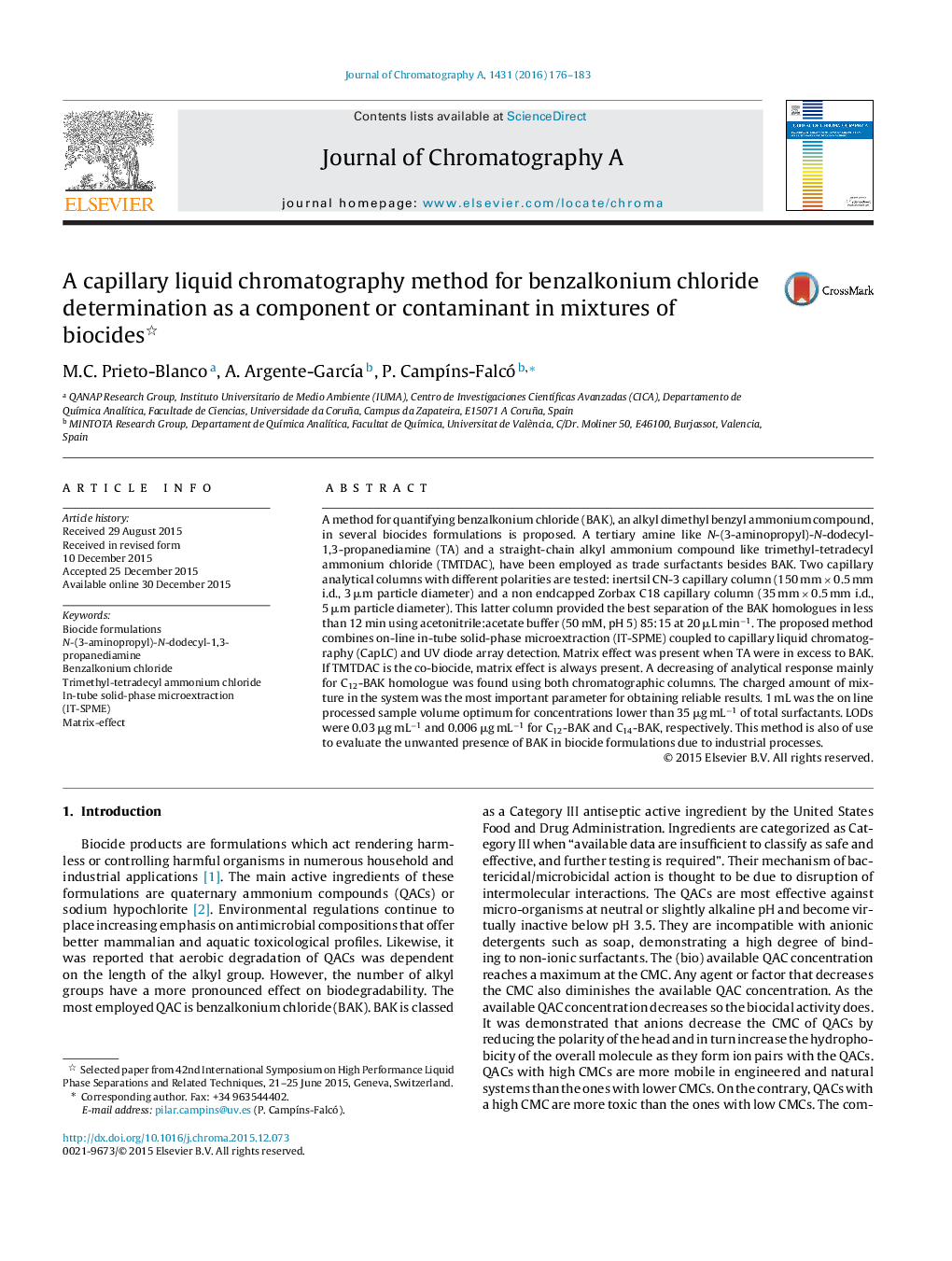| Article ID | Journal | Published Year | Pages | File Type |
|---|---|---|---|---|
| 7610389 | Journal of Chromatography A | 2016 | 8 Pages |
Abstract
A method for quantifying benzalkonium chloride (BAK), an alkyl dimethyl benzyl ammonium compound, in several biocides formulations is proposed. A tertiary amine like N-(3-aminopropyl)-N-dodecyl-1,3-propanediamine (TA) and a straight-chain alkyl ammonium compound like trimethyl-tetradecyl ammonium chloride (TMTDAC), have been employed as trade surfactants besides BAK. Two capillary analytical columns with different polarities are tested: inertsil CN-3 capillary column (150 mm Ã 0.5 mm i.d., 3 μm particle diameter) and a non endcapped Zorbax C18 capillary column (35 mm Ã 0.5 mm i.d., 5 μm particle diameter). This latter column provided the best separation of the BAK homologues in less than 12 min using acetonitrile:acetate buffer (50 mM, pH 5) 85:15 at 20 μL minâ1. The proposed method combines on-line in-tube solid-phase microextraction (IT-SPME) coupled to capillary liquid chromatography (CapLC) and UV diode array detection. Matrix effect was present when TA were in excess to BAK. If TMTDAC is the co-biocide, matrix effect is always present. A decreasing of analytical response mainly for C12-BAK homologue was found using both chromatographic columns. The charged amount of mixture in the system was the most important parameter for obtaining reliable results. 1 mL was the on line processed sample volume optimum for concentrations lower than 35 μg mLâ1 of total surfactants. LODs were 0.03 μg mLâ1 and 0.006 μg mLâ1 for C12-BAK and C14-BAK, respectively. This method is also of use to evaluate the unwanted presence of BAK in biocide formulations due to industrial processes.
Related Topics
Physical Sciences and Engineering
Chemistry
Analytical Chemistry
Authors
M.C. Prieto-Blanco, A. Argente-GarcÃa, P. CampÃns-Falcó,
